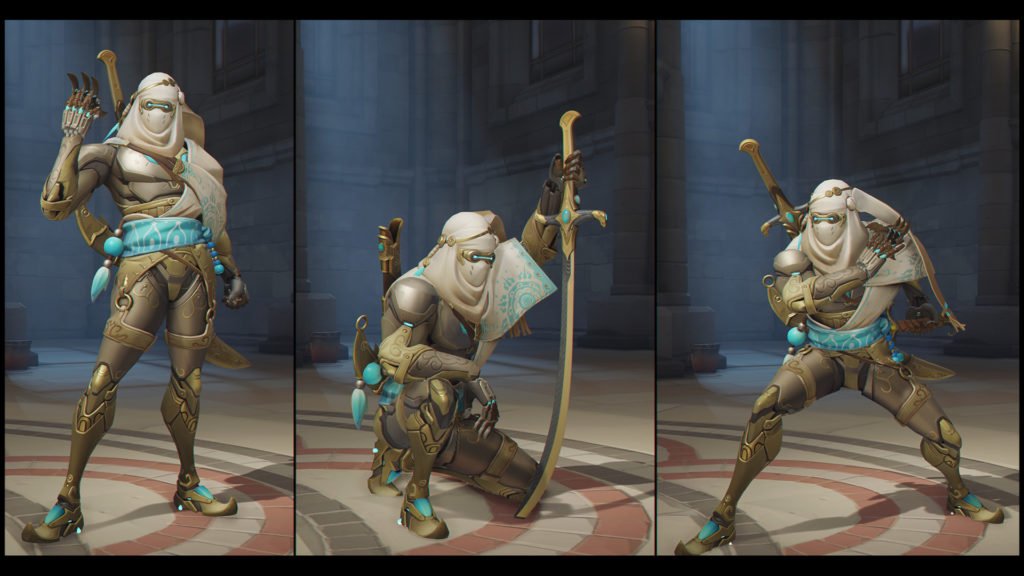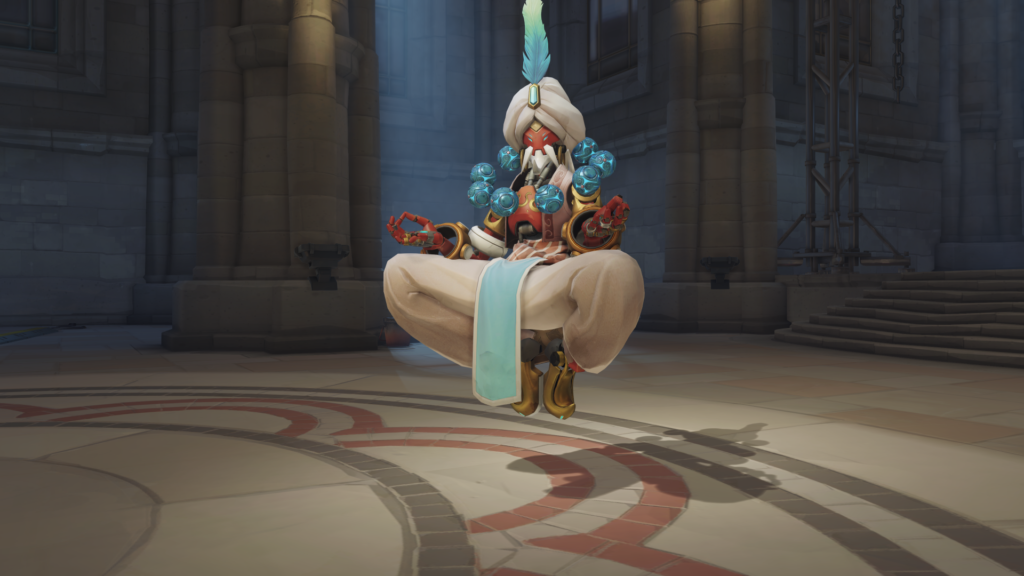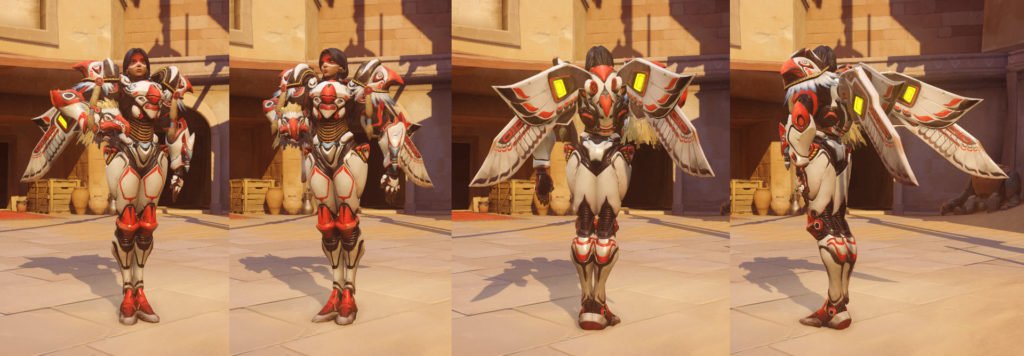If you want proof that Overwatch cares about representation– a lot– look no further than its box art. It features a woman (Tracer), a rarity in games. Even giant developer Naughty Dog had to fight to put teenage Ellie on the box art for blockbuster The Last Of Us. Tracer was also only recently revealed to be queer. In a lot of ways, the delayed reveal was genius; Blizzard forced fans to acclimate to a female lead. When some chose to accept her solely on attraction, they announced she was gay. To the negative-stereotype male gamer, they might as well of said, “Tracer is a woman, and she’s not for you. And she’s AWESOME.”
Overwatch plays with representation often, sometimes safely (Mercy is a gorgeous blonde Swiss medic who advocates neutrality), and sometimes more politically. Zarya fits the hearty Russian woman archetype, but she’s speculated to be lesbian– Russia’s politics have struggled with women and homosexuality, and Overwatch represents the nation with a person who many gamers have read as both. And more on-the-nose, the best video-gamer in Overwatch’s world is a young Korean woman; the first two descriptors are expected, the third is definitely not.
For such a politically attentive team, then, it’s surprising that Blizzard chose to treat some ethnic groups as a palette-swap, or costume, or, as the game calls it, a skin. And it’s a problem that discussing this is probably going to be seen as an attack on one of the most culturally sensitive games in modern triple-A gaming.

To be fair to Blizzard, all of the skins (by themselves) celebrate the culture they represent. The Year of the Rooster skins are largely based on the Chinese Zodiac or celebrate the Chinese story Journey to the West, and Korea’s Lunar New Year is celebrated with D.Va’s traditional Korean skin. Most heroes’ skins stay culturally consistent, like Reaper’s Day of the Dead-inspired skin, and Hanzo’s skins representing Shinto wolf deities.
For others, like Hanzo’s brother Genji, we see greater creative liberties– for instance, Genji’s Bedouin skin, which redesigns the Japanese ninja as an Arabic nomad. Which is where, maybe, Overwatch missteps.
Despite the fact that Blizzard prudently called them “skins” and not “costumes,” many of the skins end up treated tongue-in-cheek as costumes, the hero dressed up. It’s not like the hero gets a different voice actor, and the few times they get different voice lines, the lines are just as cheeky; when Mercy revives people in her Devil skin, she says, “Heroes never die! …For a price.”
The problem isn’t the skins themselves; it’s that you have a person of one culture dressing up as someone from a completely different culture or, worse, religion, for purely aesthetic reasons. It’s one thing to wear Chinese-art inspired clothes, as many heroes do for the Year of the Rooster; it’s another to swap religious garb as liberally as Zenyatta does.

Zenyatta is based in Zen Buddhism. He can, however, dress up in a turban as a Djinn or Ifrit, supernatural beings found in the Qur’an. He can also put on a skirt and headpiece to look like Ra. So essentially, a Buddhist can dress up as something Islamic or an Egyptian mythological god, which also weirdly equates an entity from a modern, practiced religion to an ancient religion now regarded as mythology.
And in a time when college students are catching flak for wearing Native American headdresses, it’s especially worth mentioning Pharah’s “Raindancer” and “Thunderbird” skins. They’re some of the most aesthetically impressive in the game. They also, smartly, take cues from totem polls, which are often assumed to be religiously significant but are generally artistic statements. The skin, by itself, is fine.
The problem arises when one considers that, in trying to nod to a culture that didn’t “get a character” to represent them in the game, Blizzard instead had them represented in a skin. To have an Egyptian woman put on face paint, dress up like a totem pole, and call herself Raindancer or Thunderbird is a little on-the-nose. (Which isn’t helped by the fact that during her ultimate, she shouts, “Justice RAINS from above!”)
It’s also worth stating that none of this is BAD, and certainly not malicious. Even someone wearing a religious headdress as part of a parodic, sexualized costume usually means no ill will. That doesn’t make it GOOD either, which comes to a bigger point about why it’s so hard to talk about “cultural appropriation”: People need to stop talking about it in terms of good and bad.

That doesn’t mean that they got everything perfect. One could see every single skin in this game as a celebration; one could also be uncomfortable seeing their ethnic group or faith’s garb being worn by someone completely separate from that group or faith. (Which isn’t helped by the fact that you make this aesthetic change by swapping “skins.”) If we were grading Overwatch on its representation, we’d give it an A+, but not 100%.
And that’s okay. It’s okay that Blizzard may have misstepped, and it’s okay to remind people to be careful of their reasons for presenting themselves in ways that have a lot of meaning in someone else’s culture or beliefs. If you’re wearing something parodic, or stereotypical, or which has religious significance, someone may feel as though you don’t think much of their culture or beliefs. That’s all; it doesn’t make you insensitive or cruel, it just means you may not have realized the full impact of your costume. And if you find this to be true, it’s an easy fix.
This is worth parsing out because Overwatch gets so much right, and with over 20 million copies sold, every decision they make affects so many people. If pointing out that throwing on face paint, dressing up like a totem pole, and calling yourself Raindancer or Thunderbird could be seen as parodic helps anyone think about race, in a time where so many are arguing about whether or not we are “post-racial,” then it’s worth saying. There are bigger battles to fight, to be sure, but as long as Overwatch is a beacon of representation to as wide and diverse an audience as it is, let’s make it the best beacon possible.

